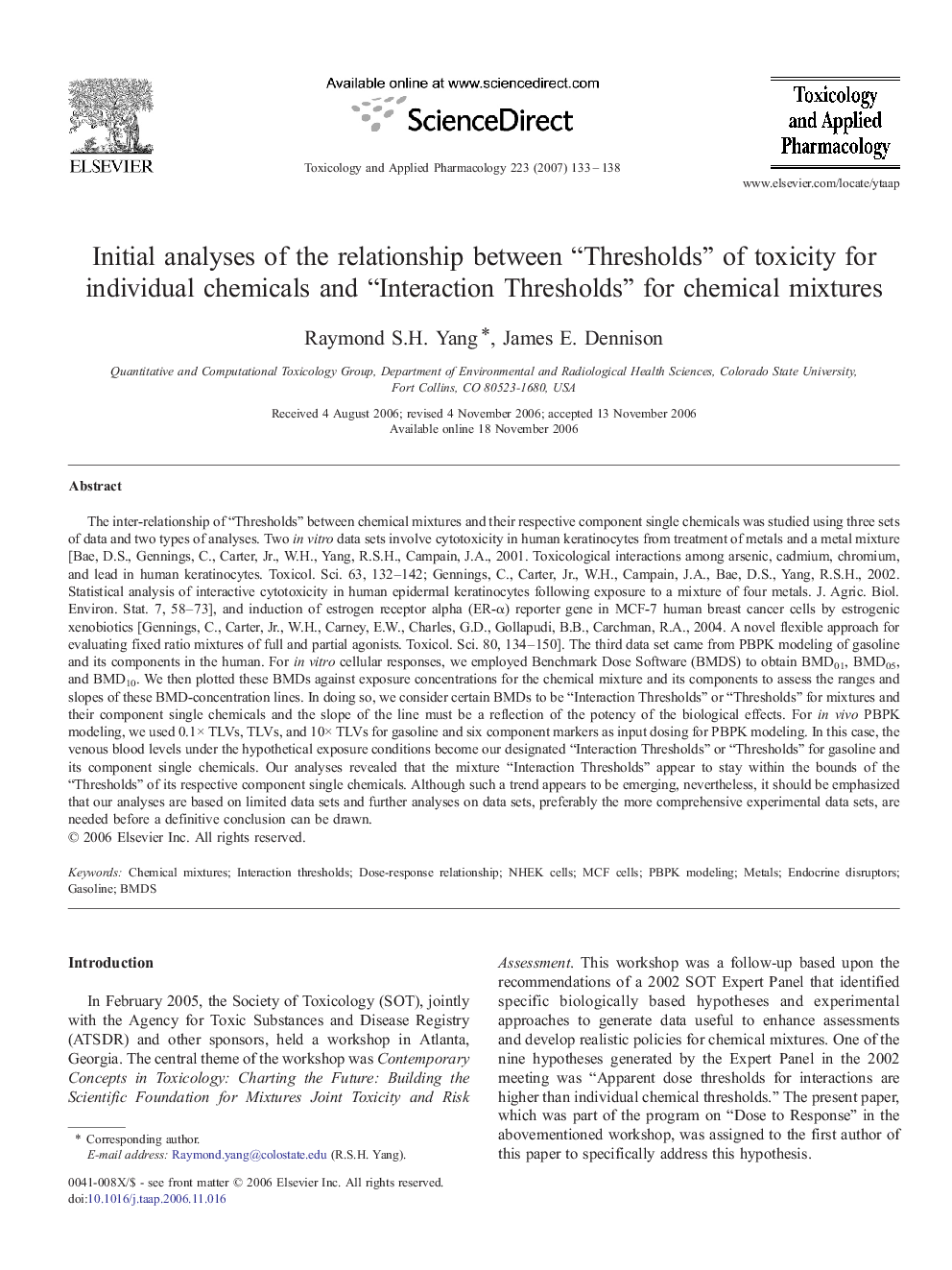| Article ID | Journal | Published Year | Pages | File Type |
|---|---|---|---|---|
| 2571846 | Toxicology and Applied Pharmacology | 2007 | 6 Pages |
The inter-relationship of “Thresholds” between chemical mixtures and their respective component single chemicals was studied using three sets of data and two types of analyses. Two in vitro data sets involve cytotoxicity in human keratinocytes from treatment of metals and a metal mixture [Bae, D.S., Gennings, C., Carter, Jr., W.H., Yang, R.S.H., Campain, J.A., 2001. Toxicological interactions among arsenic, cadmium, chromium, and lead in human keratinocytes. Toxicol. Sci. 63, 132–142; Gennings, C., Carter, Jr., W.H., Campain, J.A., Bae, D.S., Yang, R.S.H., 2002. Statistical analysis of interactive cytotoxicity in human epidermal keratinocytes following exposure to a mixture of four metals. J. Agric. Biol. Environ. Stat. 7, 58–73], and induction of estrogen receptor alpha (ER-α) reporter gene in MCF-7 human breast cancer cells by estrogenic xenobiotics [Gennings, C., Carter, Jr., W.H., Carney, E.W., Charles, G.D., Gollapudi, B.B., Carchman, R.A., 2004. A novel flexible approach for evaluating fixed ratio mixtures of full and partial agonists. Toxicol. Sci. 80, 134–150]. The third data set came from PBPK modeling of gasoline and its components in the human. For in vitro cellular responses, we employed Benchmark Dose Software (BMDS) to obtain BMD01, BMD05, and BMD10. We then plotted these BMDs against exposure concentrations for the chemical mixture and its components to assess the ranges and slopes of these BMD-concentration lines. In doing so, we consider certain BMDs to be “Interaction Thresholds” or “Thresholds” for mixtures and their component single chemicals and the slope of the line must be a reflection of the potency of the biological effects. For in vivo PBPK modeling, we used 0.1× TLVs, TLVs, and 10× TLVs for gasoline and six component markers as input dosing for PBPK modeling. In this case, the venous blood levels under the hypothetical exposure conditions become our designated “Interaction Thresholds” or “Thresholds” for gasoline and its component single chemicals. Our analyses revealed that the mixture “Interaction Thresholds” appear to stay within the bounds of the “Thresholds” of its respective component single chemicals. Although such a trend appears to be emerging, nevertheless, it should be emphasized that our analyses are based on limited data sets and further analyses on data sets, preferably the more comprehensive experimental data sets, are needed before a definitive conclusion can be drawn.
